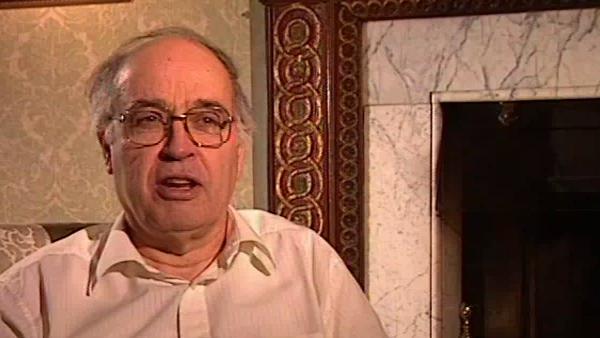Well I think there... there were two separate stages. There were the first… there was the work on the instantons which were an earlier stage. And then when the physicists came along with these things called magnetic monopoles and started to produce solutions, it... it seemed clear that... that one should try to look at them in a similar sort of way. And I... and I tried, and you... you made a better shot at it, and which various contributed; understanding how to construct these monopoles. But then the next question was… came in when we were studying the dynamics of these things, how they... how they actually interact, not just static ones. And that was actually sparked by Nick Manton, whom I talked to when I went to a conference in Trieste, and he was explaining that one should look at the slow dynamics of these things and you could use a kind of geodesic approximation to get good information about the dynamics. And he was... he was… he had some preliminary results, he knew a bit what would happen at long distances and things. And so he was obviously suggesting this was a good problem for mathematicians who knew something about the monopole spaces, to see if they could actually… so that was going at the back of my mind. And then, I've forgotten exactly when it was, but shortly after that the... the fact that super-symmetry came into the story, suggested that there were hyper-Kähler metrics around; and so then I came and talked with you and we... we… it seemed that the direct... the direct assault, trying to guess what the metric was in the early days failed. I mean I think I tried and various other people tried, you looked for a nice metric which has good symmetry properties and hoped for good formula; that's too naive. And. but it was then when we looked at it from the point of view of the full story, using the strength of the super-symmetry in the hyper-Kähler way, then that gave much more control and that made it a tractable mathematical problem which, you know, ended up by giving a solution.
And that was a very, sort of, interesting story in which the physics motivated the problem; what it should be. It also partly motivated the solution because the super-symmetry came from the physics and suggested there should be these hyper-Kähler metrics. And then we had the whole machinery of twistor theory which also came from the physics, Roger Penrose, was part of the, kind of, clue on how to tackle them. So really, all the ingredients, you might say, which made the solution, actually came from our contact with the physicists. It's just that putting them together in a nice geometrical package was probably a little more congenial to the mathematicians, it was clearly to have been rather more naturally to our particular combination of skills and experience. So we were able to actually carry it through and come out with the answer.
Then of course there was this very interesting little conundrum in the... in the middle of it where we came to a formula which seemed to contradict what the other physicists […] Gibbons and people… claimed there was no metric with these properties. And yet our calculations showed there was, and then it was very interesting to find out exactly where their... their mistake was. And it turned out to be a rather subtle one that they'd assumed something was positive because it obviously ought to be positive, but a sign could sneak in which they hadn't appreciated. And that made all the difference and turned… allowed for this rather interesting class of solutions which they'd excluded. So in a way it was… I remember coming to… talking to the physicists here and explaining this and having these arguments, and we... we clarified where the... where the… they’d, sort of, oversimplified the story. So it was an interesting... interesting development between the... the problem coming out… coming from the physics and much of the ideas coming from the physics, yet being put together in a nice elegant mathematical form. It was a nice, story I... I very much enjoyed being involved with.






